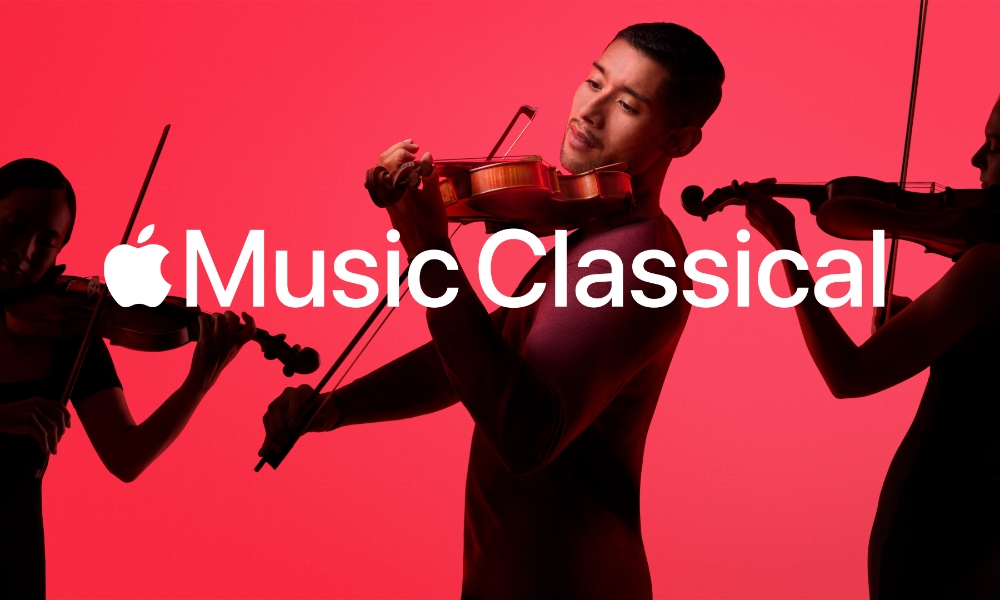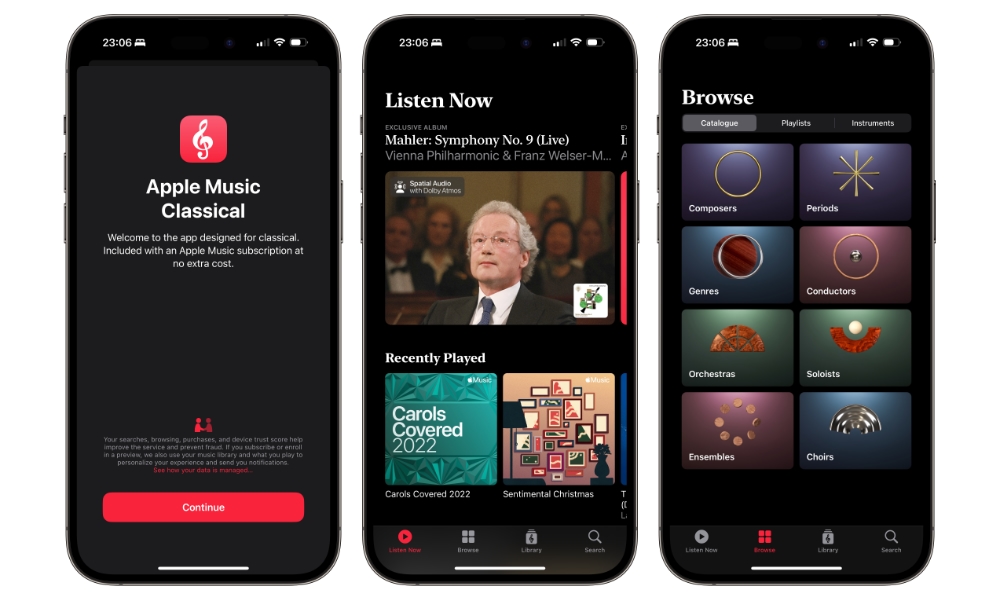Apple Music Classical Has Arrived | Here’s What You Need to Know
 Credit: Apple
Credit: Apple
Toggle Dark Mode
After teasing the launch earlier this month, Apple has officially released Apple Music Classical, a new app that provides access to the world’s largest digital classical music catalogue in a way that’s much more accessible to classical music fans.
If you hit the “Preorder” button on the Apple Music Classical app it should have already downloaded to your device late last night or early this morning, depending on what time zone you’re in (for me, it was 11:00 p.m. ET). If not, you can grab it from this App Store link — but bear in mind that you may not need to unless you’re a serious fan of the genre.
As Apple’s vice president of Apple Music and Beats explained in today’s announcement, the app is designed for both classical experts and those new to the classical genre, but it’s also not the only way to get at Apple’s extensive classical music library.
Apple Music Classical is a dedicated app that is great for classical experts as well as anyone who is new to classical, with the largest classical music selection in the world, the very best search and browse capabilities, the most premium sound experience with Spatial Audio, and thousands of exclusive recordings. We believe this is the very best classical music streaming experience available anywhere, and for us, this is just the beginning.
Oliver Schusser, Apple’s vice president of Apple Music and Beats.
In fact, Apple Music Classical is mostly just a way to view the Apple Music catalog through a different lens. It doesn’t offer access to any music that’s not already available through the main Apple Music app; it just provides a more efficient way to discover classical music tracks.
That’s an extremely important thing for classical music fans, since there’s more to organizing classical music than artist, album, and genre. Managing classical music collections was tricky even in the days of personal iTunes libraries, and Apple did have the foresight to offer custom fields for things like composer, grouping, and work name, it was always an awkward fit for folks who wanted to keep everything in a single iTunes library.
Apple Music Classical not only ensures that these necessary elements are in place, but also provides a more effective way to browse and search for music based on them. As Apple explains in its announcement:
“Classical works have multiple movements and tracks; famous pieces have hundreds of recordings with different orchestras, conductors, and soloists; and many composers have their own special catalog classifications, from Bach’s BWV to Mozart’s K. With these complexities in mind, Apple Music Classical has redesigned search to instantly deliver exactly what users are looking for using all combinations of keywords, from composer and work, to opus number, conductor, artist, or instrument, and even a work’s nickname. Looking up a work reveals all its recordings, plus an Editor’s Choice performance. And searching for a composer displays all available works.”
The appearance of the Apple Music Classical app is very similar to the standard Apple Music app, but it includes numerous touches more appropriate for classical music fans. For example, the Browse tab lets you browse by instrument, so if you’re big on oboe solos, you’ll be able to find those easily. The Library tab also includes an abbreviated list of categories focused on Albums, Playlists, Tracks, Artists, and Composers, while also adding new ones for Recordings and Works that aren’t otherwise available in Apple Music.
Put simply, there’s only one recording of Joni Mitchell’s ‘Blue,’ but thousands of ‘Rhapsody in Blue.’ This first kind of search, in someone newly interested in classical music, can be so off-putting and bewildering, so I’m very excited for everyone to finally have a way into this remarkable universe of music, which is welcoming to new (and old) classical fans, and which rewards enthusiasm for music with music, directly and intuitively.
Jonny Greenwood, English musician and composer
Ultimately, though, you’re still looking at the same Apple Music library that you’ve always been. Apple has merely made an effort to polish it up with better metadata and improved artwork. However, if you’ve ever added any classical works to your Apple Music library, those tracks will show up in the appropriate sections of Apple Music Classical. It’s basically a filtered view of your music library, designed to show only your classical music.
Limitations of Apple Music Classical
For fans of the genre, Apple Music Classical is going to be a breath of fresh air, providing everything necessary to properly enjoy classical music, from the curated playlists and optimized search features to Spatial Audio and composer biographies. Nevertheless, there are a few limitations you’ll want to be aware of before diving in.
- Apple Music Classical is available only on the iPhone. Any playlists you create are stored in your main Apple Music library, and will therefore be available through the Apple Music app, you won’t get the enhanced classical music experience on your iPad, Mac, Apple TV, or even on your dashboard via CarPlay.
- There’s no direct way to download tracks for offline listening. You can workaround that by creating a playlist and then downloading them in the main Apple Music app, but it’s a clunky way to go about it, and you’ll have to use the Apple Music app to listen to those playlists when you’re offline; even after they’ve been downloaded, the Apple Music Classical app won’t show anything when you don’t have an Internet connection — except for a message telling you that you’re offline.
- Despite Apple Music offering classical radio stations, there’s no “Radio” tab in the Apple Music Classical app.
- Apple Music Classical is included at no extra charge for anybody with an Apple Music Student, Individual, or Family Plan, including those that are part of an Apple One bundle. However, it’s not available with the Apple Music Voice plan.
- Apple Music Classical is also unavailable in China, Japan, Russia, South Korea, Taiwan, and Türkiye.
- Although Apple Music Classical is available in the same Lossless and Hi-Res Lossless formats as Apple Music, as with any other high-quality streaming music service, you’re not going to get that over Bluetooth. Serious connoisseurs of classical music will need to use wired headphones to enjoy the highest quality sound that Apple offers.
Although Apple hasn’t said anything about Apple Music Classical for iPad, Mac, or Apple TV, it has said an Android version is “coming soon.” Further, even though it was released the day after iOS 16.4 went public, Apple Music Classical only requires iOS 15.4 or later, which means it can be enjoyed on older iPhone models that don’t support iOS 16.







